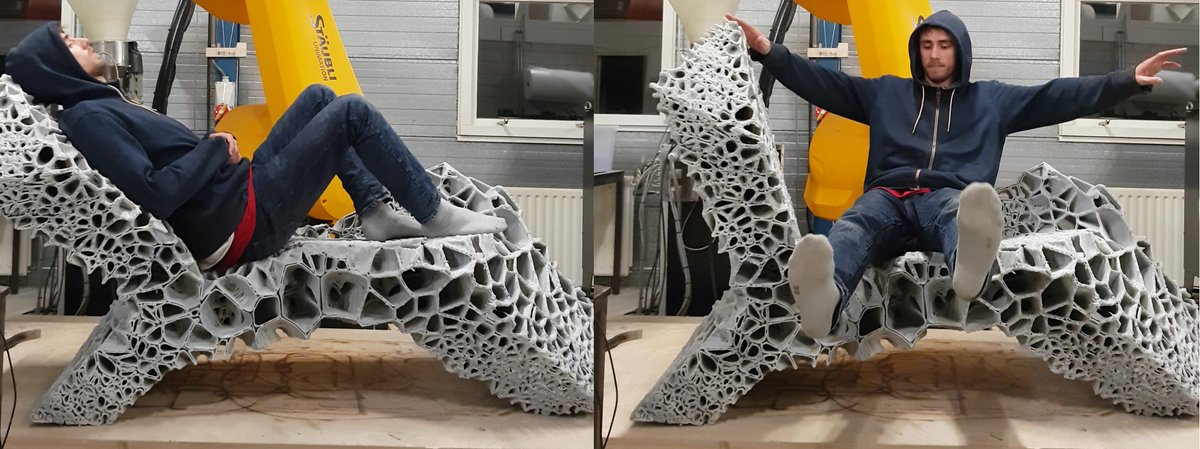Exploring the capabilities of 4D printing, members of the Robotic Building (RB) research group at Delft University of Technology (TU Delft) in the Netherlands, have created a 3D printed chaise lounge that can swiftly transform into a bed.
Project: Adaptive Stiffness
Last year, Henriette Bier, TU Delft Associate Professor, and RB Group Leader and Arwin Hidding, Master of Architecture (M.Arch), began the Variable Stiffness project to create multi-functional furniture which adapts to a user’s requirements.
With numerical and experimental studies, structural analysis, robotic path simulations, and robotic 3D printing, the RB team were able to produce an adaptive geometry of a chaise-longue which accommodates the average human body size and weight. Whether sitting or laying down, the user’s physical pressure actuates the chaise-lounge, allowing it to change shape.
According to the RB team, this shape change is achieved by combining variations in material distribution as well as the use of thermoplastic rubber and elastomers (TPE). When above its melt temperature, this material can be molded into a particular shape while maintaining elastomeric behavior without cross-linking polymers during fabrication. As a result of TPE, the chaise-lounge’s shape can be reversed into its primary rigid structure.

4D printing and TU Delft
The concept of 4D printing is allowing many objects, including furniture to be reimagined. Within this concept, a 2D polymer structure can react to environmental changes, i.e. heat, pressure or moisture, and transforms itself into a new, pre-determined 3D shape. Thus, the potential for self-assembling flat pack furniture can be developed.
Researchers from TU Delft have previously demonstrated the self-folding capabilities of 3D printed polymers for medical devices. Last year, Amir Zadpoor, Associate Professor in the Department of Biomechanical Engineering, TU Delft, and his team created a 3D printed shape-shifting tulip, as a proof-of-concept for functional bone implants.
Following this, Professor Zadpoor and his team utilized auxetic metamaterials, advanced materials which deform under pressure, and electric and sonic manipulation, to create a durable 3D printed titanium hip implant.
For regular 3D printing news updates subscribe to the 3D Printing Industry newsletter. Also, follow us on Twitter, and like us on Facebook.
Looking for new talent or seeking a career change? Search and post 3D Printing Jobs for opportunities and new talent across engineering, marketing, sales and more.
Featured image shows the 3D printed chaise-lounge. Photo via Robotic Building/TU Delft.


